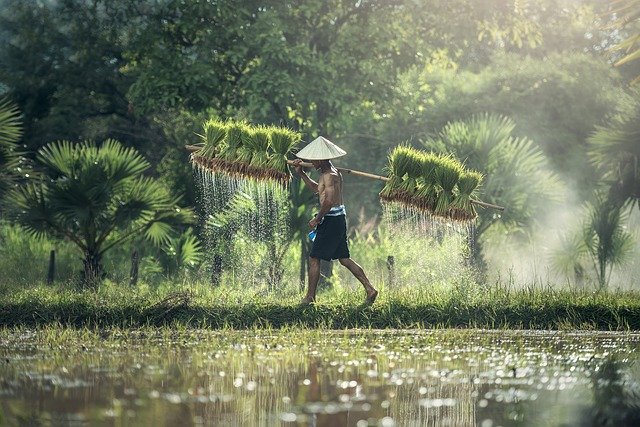Address: C76, Balewadi, Pune, Maharashtra
- Contact Sales: +91 9665099474
- Contact Email: info@insureinsights.com
Address: C76, Balewadi, Pune, Maharashtra

India is a largely agricultural country with a history of thousands of years. Indian agriculture plays a very important role in India’s historical and cultural development. In recent years, to further promote the development of agriculture, the government of India has implemented a series of policies and measures in the agriculture sector. The National Agricultural Policy (2000) is a comprehensive deployment and implementation of the rural revitalization strategy. The future of agriculture will show a different look. Want to know what changes and trends will be in the future rural areas? Let’s figure it out together.
Trend 1: The agricultural population will further decrease, and some small villages will slowly disappear
In some developed countries, the agricultural population accounts for about 10% of the total population, while the figure in the United States is 5%. With the further development of science and technology, in the future, more agricultural machinery will be used in the agricultural production process in India, and therefore, the agricultural labor force will be further reduced. Rural land, through circulation and other means, will gradually gather into the hands of a few people.
Trend 2: Farmers will slowly transform into a profession no longer a status symbol
In recent years, the countryside has shown such a new scene. Many “new farmers” have come to the countryside for farming. They all are highly professional in agricultural knowledge and skills.The advanced concept was brought into the countryside.
Scientific arrangement, administration, and arranging generation have infused a modern driving force into the wide open and brought a breeze that has never been seen some time recently. The new peasants will gradually become an occupation that everyone envies. This is positive energy for rural development.
Trend 3: Agricultural subsidies will increase further
In the EU, each farmer receives more than 150,000 rupees in government provides subsidies to the farmers every year, and 40% of the income of EU farmers comes from government subsidies. In Japan, South Korea, Switzerland, Norway, and other countries, agricultural subsidies are higher, about 60% of farmers’ income comes from government subsidies.
With the development of the economy, India’s agricultural subsidies will surely progress in the future at the same time, with the decrease of the agrarian populace and the levelheaded utilize of arriving assets, the usage of rural appropriations will be gotten to be smoother.
Other Trends
Animal vaccines: In the future, animal vaccines will continue to be used in many areas of agriculture to establish systems to help farmers get more vaccines. For example: establishing a vaccine bank to fight foot-and-mouth disease.
Agriculture attracts the cooperation of young ethnic groups: It is generally believed that the forefront of agriculture is how to attract novices into the agricultural field. Farmers hope to work closely with young people to realize the common interests of both parties and consider their retirement life. Reward young people to enter agriculture, help them reduce their debts from the government, and find their place in it.
Small farmer’s characteristic agriculture to increase income: Small farmers strengthen their characteristic agriculture to increase value, which should help provide additional capital to purchase new equipment.
Crop monitoring and other technologies: Due to the maturity of ICT technology and the advent of the 5G era, farmers are increasingly facing challenges, and found that new technologies can use networks or bandwidth to help agricultural transformation improve service quality, such as drone monitoring crops and field soil conditions, Blockchain agricultural product certification and logistics monitoring, etc.
Focus on trade wars or tariff issues: At present, the US-India trade war is not over, and the impact of state subsidies and tariffs on farmers will have to be continuously observed.
Food safety: Food safety from farmland to table is the most concerning issue for farmers and all those engaged in agricultural activities, how to strictly control to avoid pollution. In the future, farmers will face increasingly strict regulations, which will increase possible costs. For all people involved in agriculture, it is imperative to be aware of all regulations that may affect their current farming methods. Doing so can help avoid any potential problems and protect all products from any form of contamination.
Farmers and consumers interact more directly: Farmers are more and more aware of the need to interact directly with consumers, using social media processes is an easier tool to establish a good communication environment. For example, Facebook, Twitter, and Instagram.
Reuse of water resources: Water resources are still one of the many problems that farmers will face. Farmers are looking for ways to reduce water use for crops, or in many cases, choose to harvest more water in the field, and even reuse the water used. For example, the use of dirty water by humans can be used by animals and then used to water or fertilize crops after the animals drink water.